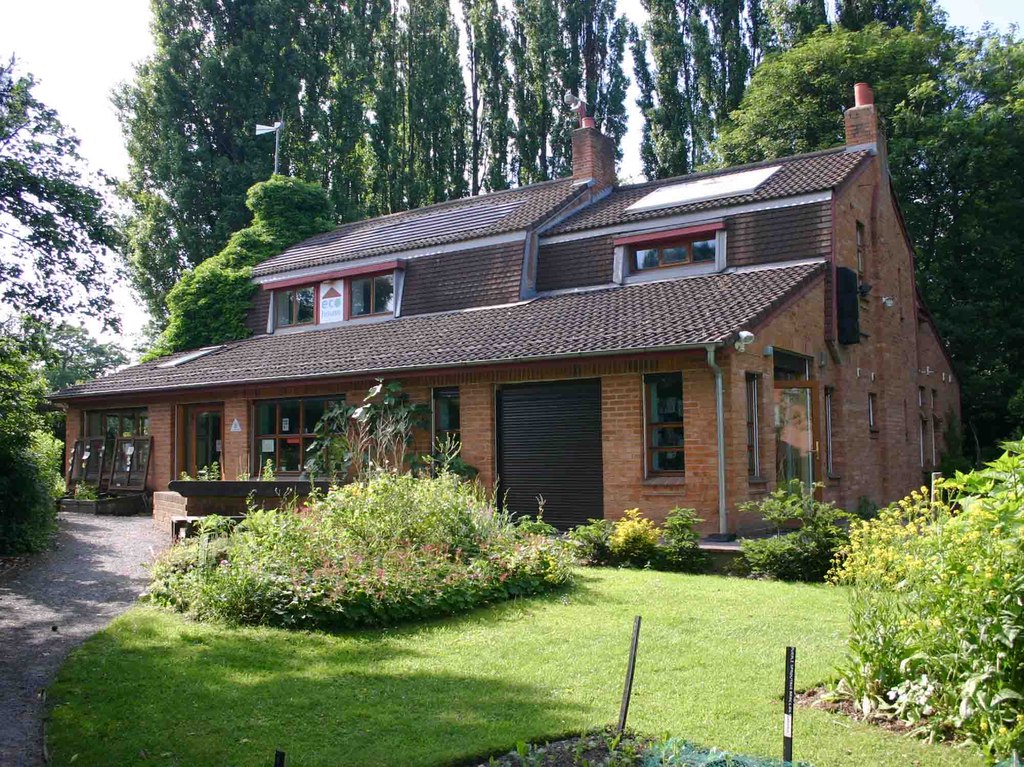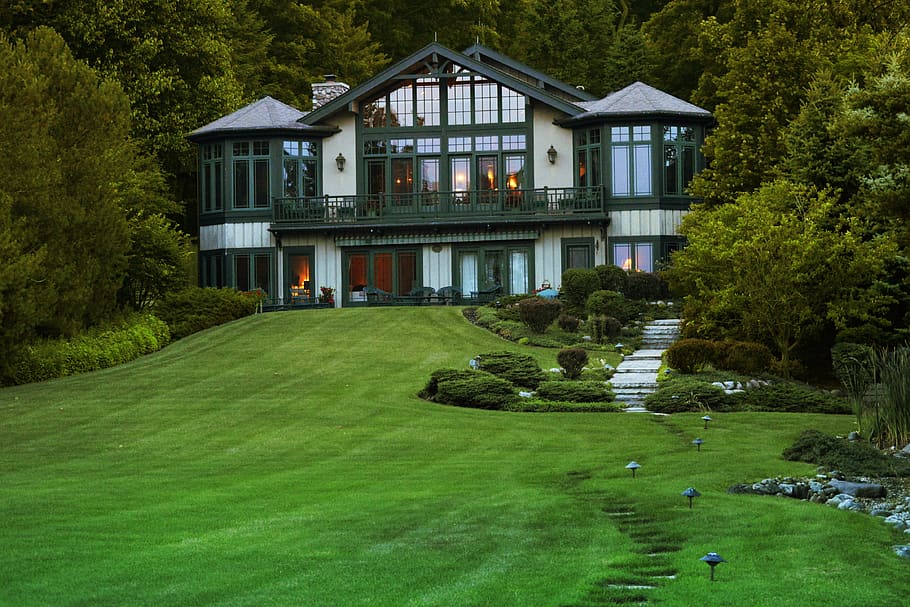You must agree to look at all the newer built homes; they are Eco Homes, Green Homes, or perhaps Sustainable Houses.
No matter what they are called, they all serve a critical role in the global burning concern, and it all comes down to energy efficiency.
But the big question is how sustainable homes work for a living. So today, we will look at the aspects of a sustainable house and what makes them so desirable.
What is a Sustainable House?
Sustainable architecture helps to minimize the negative impact of buildings on the environment. Doing this helps enhance efficiency using materials, development space, and energy. All the actions taken into the design provide future construction as well.
But considering all of the above, most people see eco-friendly homes with solar panels and slight changes to save energy. However, there is more to green building when transforming it to become eco-friendly.
It is not only switching off the lights when not used to create energy efficiency. Here is what is considered when building a sustainable house.
The Design
Most modern homes use the advantage of the climate known as passive design. When architects and builders do it correctly, it helps reduce the need for heating and cooling.
Instead, they use natural resources for cooling and heating from the shade and sun. Therefore, homeowners can keep an ideal temperature in their living space.
While designing a green home is easier, you can still sustain your traditional home, keeping energy efficiency in mind.
Use of Material
The materials in the house’s construction determine the property’s environmental status. Using durable and recyclable fabrics in the building helps decrease using new materials down the line.
In addition, it minimizes the environmental impact during the extraction of the materials to the construction phase. So your house is eco-friendly and called a sustainable house.
Not Just an Eco Home
It all comes down to lessening the property’s impact on the environment. First, interior designers add renewable additions from rainwater tanks and solar panels to energy-star appliances throughout the living space. Doing this helps reduce the carbon footprint. So it all comes down to three key elements you can see next.
A Green Home has three key elements as follow:
The home is environmentally sustainable to reduce greenhouse gas emissions, reduce waste, and save water. The process takes place from the construction to the move-in and living into the future. Therefore, it is energy efficient to help save on heating and cooling.
The living space is socially sustainable with a universal design. Your home helps prevent injuries with safety features keeping the family healthy and safe. In addition, there are security features to reduce crime while improving your security. The features provide comfort and flexibility throughout different life stages, from kids to older people in the home.
Lastly, an economically sustainable house saves you money from construction until you move in, as they use sustainable materials. With the architects and careful planning, you need not do major renovations from water, maintenance, and energy use as costs are reduced.
How Does an Eco-Friendly Home Impact the Environment?
When building an office or home, the environment plays an important role. Building passive homes help lessen the impact of climate change by turning it around.
So to help resolve the problem, building green homes is essential, from energy use and building to systems used inside and outside the home.
Constructing a passive home helps reduce and eliminate fossil fuel or climate-changing energy use. All the materials are renewable with loads of clean energy sources.
In turn, it lessens the carbon footprint and helps reduce air and water pollution.
All of these result in clean water resources reducing the use of endangered natural or slow-growing resources.
Further, it helps to protect plants and animals while generating less waste. Your surroundings are less toxic, and using local building materials reduces pollution and the use of carbon-based fuels.
Do We Need to Shift to Going Green
Yes, as there is an increased demand for new homes and office buildings. With the latest technologies, it helps to improve and cuts the costs down. Using eco-friendly materials and products encourages improved technology and helps improve performance.
For example, when installing solar photovoltaic panels, the costs dropped to 90%. In addition, with the improvement of the solar boards that convert sunlight to electrical power, it becomes more efficient, helping to reduce the solar panels needed for a home.
Therefore, installation costs are lower, and you save money on your energy bill. Even home battery storage improved, letting the costs go down. Therefore, the energy stored from the solar panel is greater for night use and cloudy days.
Even non-green-built homes are moving to use energy-efficient features. So the more green homes you build, you get the increase in demand, and the selling prices exceed your conventional standards as it is energy-efficient, eco-friendly, durable, and comfortable.
So the benefits of going green are tremendous.
Benefits of Green Building
The apparent advantage of a sustainable home is saving power compared to living on a traditional property. In addition, your living space stores energy, reducing consumption and saving you money on the bills.
You get a durable design that is sustainable and needs less maintenance. It reduces the stress of added costs when the time comes to have renovations done further down the line.
It helps minimize household waste that normally lands in landfills.
Top 3 Aspects of a Sustainable Home
Living in an eco-home saves you money, right? Of course, it does, but there are three more aspects one can look at that helps you as a property owner.
The Use of Natural Lighting
Sustainable living means using LED lighting compared to incandescent ones. However, the huge windows allow in more light, saving you loads of switching lights on all the time. Remember your older houses.
The living spaces are cramped with walls and small windows that leave the place dark and gloomy. Further, with LED lighting, you can also use it 25 times longer. So the natural light entering the place saves you loads on that energy bill.
Further, it greatly impacts the surroundings, and less energy is generated to keep the lights on in your home. As a result, you have fewer toxic materials, such as mercury, that need to be mined. Further, you do not throw out items that negatively impact bulbs or the surroundings.
You Have Enough Insulation
The right ventilation, AC system, heating system, and insulation reduce fossil fuel use. As you know, oil, gas, and coal pump dirty energy resulting in greenhouse gasses in the atmosphere. With the correct housing weatherization, you need not use more energy to keep it warm or cool. and is
All of these have a massive benefit in fighting climate change. But, unfortunately, power plants cause air and water pollution. But luckily, coal mine extraction is also working towards working more eco-friendly but will never be able to provide clean energy.
Furthermore, according to the EPA, living in a sustainable home helps safeguard regional and local ecosystems’ biodiversity.
Energy Efficient Cost-effective
You do not want your family to breathe in toxic gas. No, neither drink toxic water. Further, the smell of gasses from oil rigs, mines, and the power station hangs in the air, smelling awful. Yet, your health and aesthetic benefits are enormous when living in an energy-efficient space with a greener planet.
According to the EPA, green homes present homeowners with numerous benefits that positively impact the environment. Not only do you protect your surroundings with clean, safe air and water. It reduces waste streams.
Therefore, it leads to conserving and restoring the ecosystem. On top of this, your home is comfortable year-round to live in. In winter, it is warmer, while during summer, it remains cool. As mentioned, proper insulation reduces noise pollution, and you need not turn the temperature up.
The health benefits are super, as the huge windows with open spaces allow fresh air to reduce moisture and mold buildup. In addition, you have clean water with air sealing. All of these add up to reducing bacteria, germs, and toxicity.
Lastly, it is economical as energy use is reduced, saving you money on the bills.
Final Word from Modlust
Considering all the aspects of finances, quality of life, and the environment, the benefits of living in an eco-home are huge. So you can expect new constructions to move more to live green.
But if you are still living in a house that is not green, you can still change it. Making small building changes by adding solar panels, using bamboo floors, and utilizing programmable thermostats is already starting.
Frequently Asked Questions
With a sustainable house, you respect nature as it uses resources available to provide renewable energy from the air conditioning to the water heaters. It helps save you costly expenses to cool or heat the living space.
It means avoiding using disposable items and reducing food garbage, making non-toxic cleaning products to grow a sustainable garden, buying fewer packaging products, and starting a recycled bin.
You can enjoy improved comfort year-round to breathe easier, experience a simple lifestyle, and feel better as you contribute to a cleaner Earth.
The house is called an earthship as it is off the grid with outstanding energy consumption and made with natural to recycled materials.
Regarding sustainability for four people, the recommended house size is 860 square feet.
A sustainable house can be more expensive than a traditional house as they usually cost between $80 to $100 per square foot.










Comments